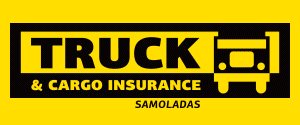The number of U.S. companies using a budgeting tool made famous in the 1970s by former U.S. President Jimmy Carter is surging as they turn their spending habits upside down to boost profits and to re-invest in their businesses.
The upswing in zero-based budgeting (ZBB) signals that a broader cross-section of U.S. companies anticipate turbulence in their revenue growth. They face more pressure on profits, too, as wages and interest rates increase, and a stronger dollar makes their products more expensive overseas.
In consumer staples, where sales growth is often capped in the low-to-mid single digits, Campbell Soup Co, Kellogg Co, and Oreo cookie maker Mondelez International Ltd have already rolled out ZBB programs that promise billions of dollars in savings.
Other industries, including finance, energy and manufacturing, are now following suit. Use of ZBB in 2017 is expected to increase dramatically in the United States and around the globe, according to consulting experts. Bain & Company reported last year in a survey of 406 North American companies that 38 percent of that group would use ZBB, up from just 10 percent in 2014.
“ZBB has taken on a life of its own,” said Greg Portell, a partner at consulting firm A.T. Kearney.
A ZBB approach requires corporate managers to justify each line item of spending in their budgets, or even build their budgets from scratch. That is a departure from the typical process of using the previous year’s budget as a starting point and adjusting it based on revenue and inflation projections, for example.
It often cracks down on the size of a company’s real estate footprint, corporate travel, terms of international assignments, redundant technology and outside consultants. Employees get cut, too.
But there are risks. One is that companies focus too keenly on restraining spending and not on reinvestment that promotes new products and revenue growth.
“You continuously have to ask what are strategic costs and how can we invest behind the things that drive the highest volume,” said Jason Heinrich, a partner in Bain & Company’s Chicago office.
 Feeling threatend
Feeling threatend
ZBB first gained widespread attention in the late 1970s, when Carter, as president, said he would apply the budgeting principles to federal spending. It never fully got off the ground, however, and Ronald Reagan abandoned it when he became president in 1981.
Its recent resurgence is due in part to Brazilian buyout firm 3G Capital, which used ZBB when it combined H.J. Heinz with Kraft Foods in 2015.
The combined Kraft Heinz now has the best profit margins among its peers with an estimated year-over-year gross margin expansion of 258 basis points, better than twice the average among rivals, according to Morgan Stanley. Kraft Heinz’s stock sports a 2.5-point price-to-earnings-multiple premium over its peers.
3G’s success is one reason the highest adoption rate of ZBB is in the consumer staples sector, which has banked on cost cutting to offset weak sales growth. In the current fourth quarter reporting season, the consumer staples sector is on track to report profit of 6.3 percent off revenue growth of just 3.2 percent, according to Thomson Reuters data.
Contrast that with the consumer discretionary sector where sales are seen rising 5 percent but profit just 1.1 percent.
Greg Kuczynski, a consumer staples analyst at asset manager Janus Capital, said ZBB is also being used by some to head off agitation from activist shareholders or even takeovers, like the Kraft Heinz deal.
“So many of them feel threatened,” he said. “They’re desperately implementing ZBB packages.”
Now the approach is spreading to energy, finance, health care and manufacturing. Cheniere Energy Inc, Huntington Bancshares Inc, Baxter International Inc and Ford Motor Co are some of the latest devotees.
“If a company uses zero-based budgeting, I have more confidence it can take out cost faster than peers who do not,” said Marc Scott, who helps run the $1 billion American Century All-Cap Growth Fund.
 Tougher than it looks
Tougher than it looks
Not everyone is sold on it. It can be an uncomfortable adjustment for managers and companies have to be careful not to alienate customers and business partners, according to analysts.
The biggest risk is that companies concentrate only on cutting costs, and don’t put some of that money back to work behind businesses with the potential for growth. One unintended consequence is cutting a product’s marketing budget only to see a rival boost spending for their product and grab market share.
“It’s not so simple as some of our other competitors out there make you believe, which has been roughly translated into, ‘Let’s cut all the costs as long as we can get away with it to show you better margins for a short period of time. But I can’t promise you any growth along the way,'” Unilever Chief Executive Paul Polman told investors in November.
Even Kraft Heinz has had trouble generating consistent growth. Its organic net sales, which excludes the impact of currency fluctuations and other items, declined by 1 percent in the three-month period that ended Oct 2.
Still, the cost cutting has caught the attention of investors, particularly when companies scrap product lines that add little value.
American Century’s Scott said ZBB was a factor when he evaluated kidney dialysis provider Baxter International, which has used ZBB principles to cancel several programs that added little value.
He began building a position in late 2015 when Baxter traded below $35 a share, according to Thomson Reuters data. The fund now owns about 540,000 shares and the stock trades around $46.
“It was just another feather in their cap,” Scott said about Baxter’s use of ZBB. “It’s not a huge growth play, but we expect their profit margins to nearly double in a couple of years.”
(By Tim McLaughlin, Reuters)















































